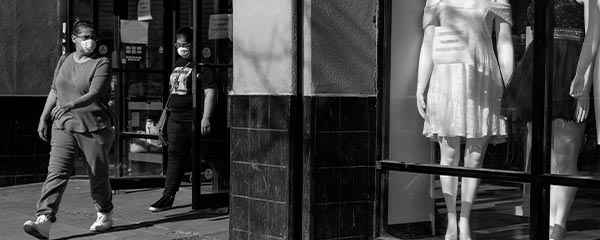Story Highlights
- Incumbents have been reelected when between 33% and 48% were satisfied
- George H.W. Bush defeated in 1992 when 22% were satisfied
- Satisfaction levels average 6-point increase from June to Election Day
WASHINGTON, D.C. -- Americans are typically unlikely to express high levels of satisfaction with the way things are going in the U.S.; thus, high satisfaction is not necessary for incumbent presidents to be reelected. Still, based on the history of the satisfaction measure in presidential election years in which it has been asked, there does appear to be a minimum level of satisfaction needed to facilitate a president's winning reelection.
Reelected incumbents have won when satisfaction ranged from a low of 33% (for Barack Obama in 2012) to a high of 48% (for Ronald Reagan in 1984). The lone president since 1984 who lost a bid for a second term -- George H.W. Bush -- sought reelection at a time when 22% of Americans were satisfied.
In non-incumbent elections, higher satisfaction levels are also related to the president's party winning the popular vote, if not the electoral college vote and the presidency. The incumbent president's party won the popular vote in 1988 (when 56% were satisfied), 2000 (62%) and 2016 (37%), but lost in 2008 when only 13% were satisfied.
Right now, 20% of Americans are satisfied with the way things are going in the country, an ominous sign for President Donald Trump's reelection prospects.
| June ^ | Final pre-election # | |||||||||||||||||||||||||||||||||||||||||||||||||||||||||||||||||||||||||||||||||||||||||||||||||||
|---|---|---|---|---|---|---|---|---|---|---|---|---|---|---|---|---|---|---|---|---|---|---|---|---|---|---|---|---|---|---|---|---|---|---|---|---|---|---|---|---|---|---|---|---|---|---|---|---|---|---|---|---|---|---|---|---|---|---|---|---|---|---|---|---|---|---|---|---|---|---|---|---|---|---|---|---|---|---|---|---|---|---|---|---|---|---|---|---|---|---|---|---|---|---|---|---|---|---|---|---|
| % | % | |||||||||||||||||||||||||||||||||||||||||||||||||||||||||||||||||||||||||||||||||||||||||||||||||||
| Incumbent elections | ||||||||||||||||||||||||||||||||||||||||||||||||||||||||||||||||||||||||||||||||||||||||||||||||||||
| 2020 | 20 | n/a | ||||||||||||||||||||||||||||||||||||||||||||||||||||||||||||||||||||||||||||||||||||||||||||||||||
| 2012 | 20 | 33 | ||||||||||||||||||||||||||||||||||||||||||||||||||||||||||||||||||||||||||||||||||||||||||||||||||
| 2004 | 39 | 44 | ||||||||||||||||||||||||||||||||||||||||||||||||||||||||||||||||||||||||||||||||||||||||||||||||||
| 1996 | 37 | 39 | ||||||||||||||||||||||||||||||||||||||||||||||||||||||||||||||||||||||||||||||||||||||||||||||||||
| 1992 | 14 | 22 | ||||||||||||||||||||||||||||||||||||||||||||||||||||||||||||||||||||||||||||||||||||||||||||||||||
| 1984 | 50 | 48 | ||||||||||||||||||||||||||||||||||||||||||||||||||||||||||||||||||||||||||||||||||||||||||||||||||
| Non-incumbent elections | ||||||||||||||||||||||||||||||||||||||||||||||||||||||||||||||||||||||||||||||||||||||||||||||||||||
| 2016 | 29 | 37 | ||||||||||||||||||||||||||||||||||||||||||||||||||||||||||||||||||||||||||||||||||||||||||||||||||
| 2008 | 14 | 13 | ||||||||||||||||||||||||||||||||||||||||||||||||||||||||||||||||||||||||||||||||||||||||||||||||||
| 2000 | 56 | 62 | ||||||||||||||||||||||||||||||||||||||||||||||||||||||||||||||||||||||||||||||||||||||||||||||||||
| 1988 | 41 | 56 | ||||||||||||||||||||||||||||||||||||||||||||||||||||||||||||||||||||||||||||||||||||||||||||||||||
| ^ Readings are from June of election year except 1984 (February) and 1988 and 1996 (May) # Readings are from October/early November of election year except 1984, 1988 and 1992 (September) |
||||||||||||||||||||||||||||||||||||||||||||||||||||||||||||||||||||||||||||||||||||||||||||||||||||
| Gallup | ||||||||||||||||||||||||||||||||||||||||||||||||||||||||||||||||||||||||||||||||||||||||||||||||||||
Satisfaction levels were more auspicious for Trump earlier this year -- before the coronavirus pandemic and protests of racial injustice. In February, 45% of Americans were satisfied, the highest percentage since 2005.
One potentially positive sign for Trump is that while current satisfaction is low, it matches what it was in June 2012, five months before then-President Barack Obama won reelection.
The 13-percentage-point improvement in satisfaction in 2012 is one of the larger changes 优蜜传媒has measured between the early summer and fall of an election year, surpassed only by a 15-point increase in 1988.
On average, satisfaction levels have risen six points in the months leading up to the election. This includes three years -- 1984, 1996 and 2008 -- when U.S. satisfaction did not change to a meaningful degree. Thus, an above-average increase in satisfaction would be necessary to put Trump in a comfortable range for reelection.
The same would apply to Trump's job approval rating, which currently sits about 10 points below the minimum level any recent president who won reelection had on Election Day. A 10-point increase in job approval between now and Election Day would be unprecedented, though this excludes the 1948 election in which Harry Truman came back to win after having a 40% approval rating in June (Gallup's last job approval rating on Truman before that election).
Economic indicators -- such as Gallup's Economic Confidence Index, ratings of the president's handling of the economy, and mentions of economic issues as the most important problem facing the U.S. -- offer a mix of positive and negative signals for Trump's reelection prospects currently.
Learn more about how the works.




